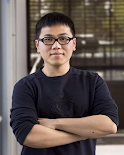
Hexiang (Frank) Hu
Hexiang Hu is a Research Scientist at Google. He earned his Ph.D. degree in Computer Science from Viterbi School of Engineering at University of Southern California (USC), advised by Prof. Fei Sha. He earned dual Bachelor’s degrees in Computer Science from Zhejiang University and Simon Fraser University with honor. His long-term research goal is to build agents that understand human language in the perceptual and embodied environments.
Research Areas
Authored Publications
Google Publications
Other Publications
Sort By
PaLI-X: On Scaling up a Multilingual Vision and Language Model
Josip Djolonga
Piotr Padlewski
Basil Mustafa
Carlos Riquelme
Sebastian Goodman
Yi Tay
Siamak Shakeri
Daniel Salz
Michael Tschannen
Mandar Joshi
Filip Pavetić
Anurag Arnab
Yuanzhong Xu
Keran Rong
Computer Vision and Pattern Recognition Conference (CVPR) (2024)
Preview abstract
We explore the boundaries of scaling up a multilingual vision and language model, both in terms of size of the components and the breadth of its training task mixture. Our model achieves new levels of performance on a wide-range of varied and complex tasks, including multiple image-based captioning and question-answering tasks, image-based document understanding and few-shot (in-context) learning, as well as object detection, video question answering, and video captioning. Our model advances the state-of-the-art on most vision-and-language benchmarks considered (20+ of them). Finally, we observe emerging capabilities, such as complex counting and multilingual object detection, tasks that are not explicitly in the training mix.
View details
PreSTU: Pre-Training for Scene-Text Understanding
Jihyung Kil
Sebastian Goodman
Wei-Lun Chao
ICCV (2023)
Preview abstract
The ability to recognize and reason about text embedded in visual inputs is often lacking in vision-and-language (V&L) models, perhaps because V&L pre-training methods have often failed to include such an ability in their training objective. In this paper, we propose PreSTU, a novel pre-training recipe dedicated to scene-text understanding (STU). PreSTU introduces OCR-aware pre-training objectives that encourage the model to recognize text from an image and connect it to the rest of the image content. We implement PreSTU using a simple transformer-based encoder-decoder architecture, combined with large-scale image-text datasets with scene text obtained from an off-the-shelf OCR system. We empirically demonstrate the effectiveness of this pre-training approach on eight visual question answering and four image captioning benchmarks.
View details
Preview abstract
Language Models have been shown to store massive amounts of world knowledge implicitly in their parameters. However, even with ever-larger networks, models often fail to encode infrequent information such as rare entities/events, while paying the price of massively increasing computational costs. Recently, retrieval-augmented models, such as REALM, RAG, and RETRO, were proposed to incorporate world knowledge into language models by leveraging an external non-parametric index, achieving impressive performance with constrained model sizes. However, these methods are restricted to retrieving only textual knowledge, neglecting the ubiquitous amount of knowledge in other modalities like images - much of which contains information not covered by any text. To address this limitation, we propose the first Multimodal Retrieval-Augmented Transformer (MuRAG), which accesses an external non-parametric multimodal memory to augment language model pre-training. MuRAG is pre-trained with a mixture of large-scale image-text and text-only corpora using a joint contrastive and generative loss. In experiments, we evaluate MuRAG's performance on two downstream datasets that require retrieving and reasoning over both images and text to answer a given query, WebQA, and MultimodalQA. Our results show that MuRAG's outperforms competitive baselines by more than 10\% accuracy - achieving the best-known performance on those tasks.
View details
MosaicOS: A Simple and Effective Use of Object-Centric Images for Long-Tailed Object Detection
Cheng Zhang
Tai-Yu Pan
Yandong Li
Dong Xuan
Wei-Lun Chao
ICCV (2021)
Preview abstract
Many objects do not appear frequently enough in complex scenes (e.g., certain handbags in living rooms) for training an accurate object detector, but are often found frequently by themselves (e.g., in product images). Yet, these object-centric images are not effectively leveraged for improving object detection in scene-centric images. In this paper, we propose Mosaic of Object-centric images as Scene-centric images (MosaicOS), a simple and novel framework that is surprisingly effective at tackling the challenges of long-tailed object detection. Keys to our approach are three-fold: (i) pseudo scene-centric image construction from object-centric images for mitigating domain differences, (ii) high-quality bounding box imputation using the object-centric images' class labels, and (iii) a multi-stage training procedure. On LVIS object detection (and instance segmentation), MosaicOS leads to a massive 60% (and 23%) relative improvement in average precision for rare object categories. We also show that our framework can be compatibly used with other existing approaches to achieve even further gains. Our pre-trained models are publicly available at https://github.com/czhang0528/MosaicOS/.
View details
No Results Found
